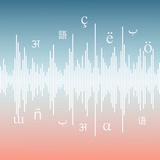18B speech recognition models
https://huggingface.co/collections/espnet/owls-scaling-laws-for-speech-recognition-and-translation-67ab7f991c194065f057ce8d
https://arxiv.org/abs/2502.10373
OWLS: Scaling Laws for Multilingual Speech Recognition and Translation Models
William Chen, Jinchuan Tian, Yifan Peng, Brian Yan, Chao-Han Huck Yang, Shinji Watanabe
Neural scaling laws offer valuable insights for designing robust sequence processing architectures. While these laws have been extensively characterized in other modalities, their behavior in speech remains comparatively underexplored. In this work, we introduce OWLS, an open-access, reproducible suite of multilingual speech recognition and translation models spanning 0.25B to 18B parameters, with the 18B version being the largest speech model, to the best of our knowledge. OWLS leverages up to 360K hours of public speech data across 150 languages, enabling a systematic investigation into how data, model, and compute scaling each influence performance in multilingual speech tasks. We use OWLS to derive neural scaling laws, showing how final performance can be reliably predicted when scaling. One of our key findings is that scaling enhances performance on low-resource languages/dialects, helping to mitigate bias and improve the accessibility of speech technologies. Finally, we show how OWLS can be used to power new research directions by discovering emergent abilities in la
>>Click here to continue<<

